Chinese Gardens & Japanese Gardens Singapore
The East vs West debate is a well-known rivalry that’s been around for as long as time itself. But a year after the reopening of the revamped Chinese and Japanese Gardens in Singapore, it looks like Westies have a leg up in the debate as it’s also the first heartland National Park here. So, we went down and braved the heat to see what attractions were worth checking out.
Table of Contents
- Chinese Gardens & Japanese Gardens Singapore
- What to know before visiting the Chinese & Japanese Gardens?
- How to go to the Chinese & Japanese Garden in Singapore?
- – Attractions to check out at the Chinese Garden in Singapore –
- – Attractions to check out at the Japanese Garden in Singapore –
- – Where to eat at the Jurong Lake Gardens –
- 1. Eden Cafe
- 2. Canopy Jurong Lake Gardens
- 3. Kin Yang Thai Food
- 4. Devil’s Kitchen
- 5. Nam Kee Chicken Rice Restaurant
- 6. Chuan Shi Dai 川食代
- 7. Kotobuki
- How do I navigate around Chinese & Japanese Gardens in Singapore?
What to know before visiting the Chinese & Japanese Gardens?
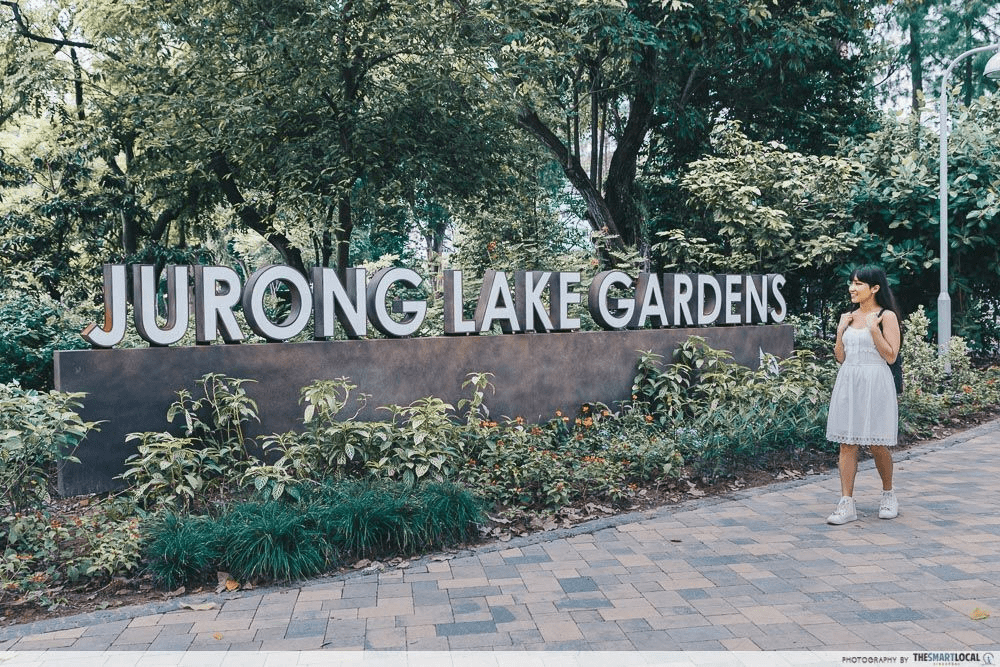
The Chinese Gardens and Japanese Gardens in Singapore have reopened after 5 years as part of Jurong Lake Gardens. This includes Lakeside Garden which had already been completed a while back. Entrance to all the parks is free and these are open to the public from 6am-10pm daily. You can cycle along the designated park connector, stroll along the various tracks, and even bring your dog out on a walk as long as it’s leashed.
Cyclists unfortunately can’t cycle inside either Chinese or Japanese Gardens but you can check out these other cycling routes instead.
How to go to the Chinese & Japanese Garden in Singapore?
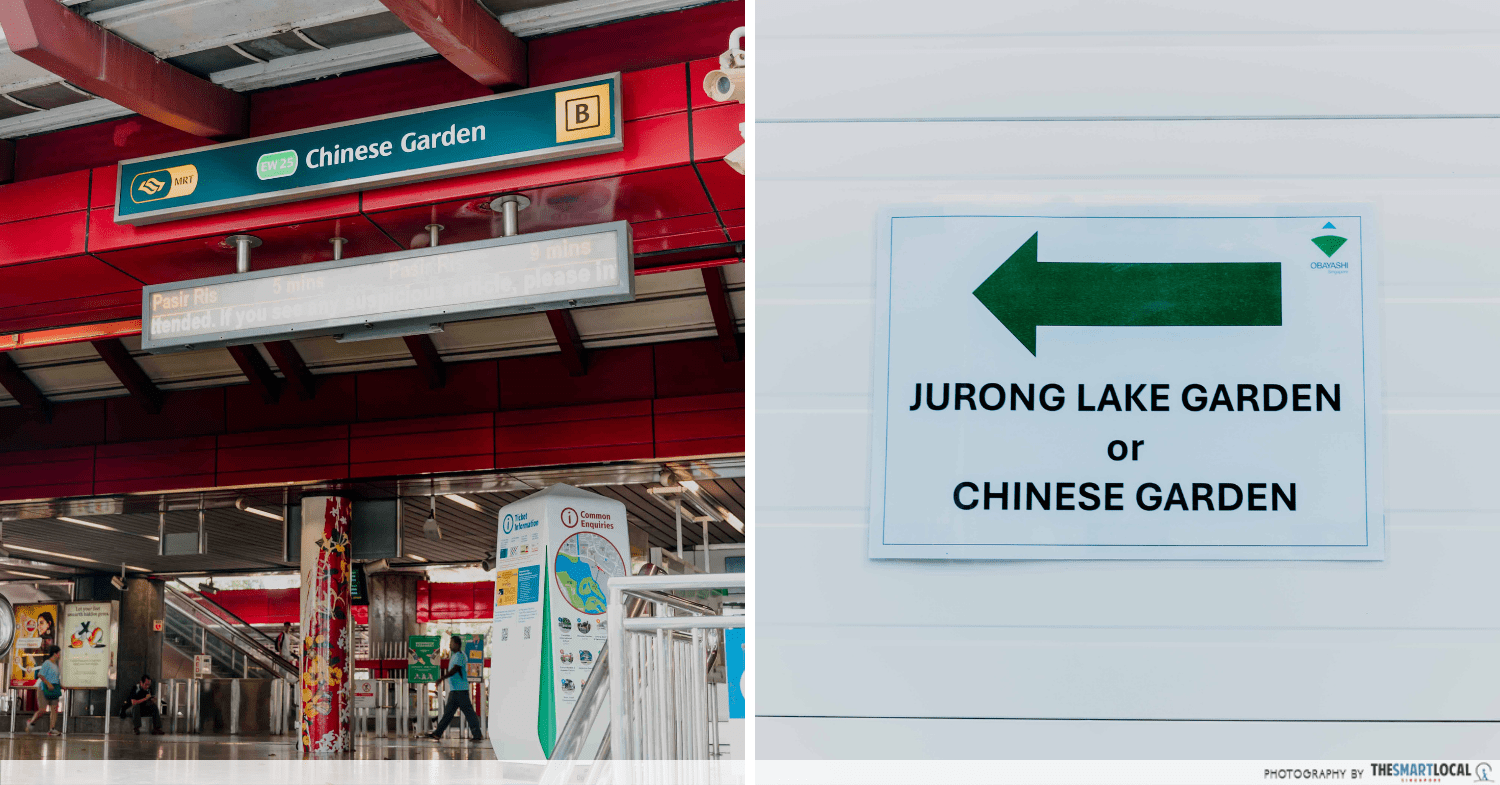 Head to Exit B, and you will find a sign right outside telling you where to go.
Head to Exit B, and you will find a sign right outside telling you where to go.
To get to the Chinese Garden, just take the MRT on the East-West line and alight at the Chinese Garden station. After that, it’s a 5-minute walk to the east entrance of the garden. Rest assured that the walkway is sufficiently sheltered up until the bridge that leads to the gardens.
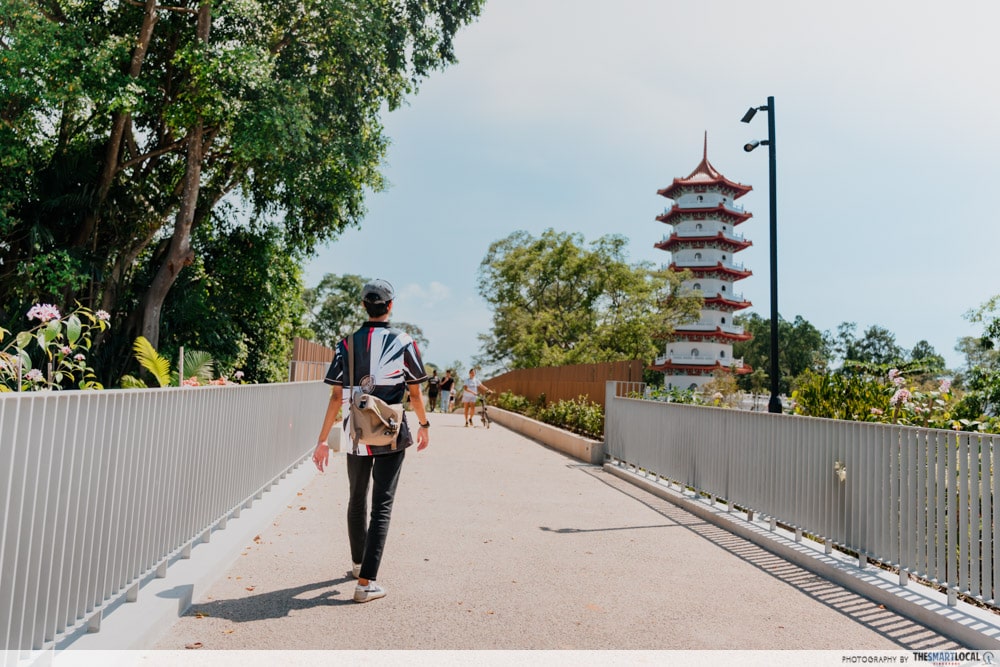
The Chinese Garden Bridge was inspired by architecture from the Song Dynasty.
As you cross the Chinese Garden Bridge, you will see the Cloud Pagoda in the distance, marking your entrance into the Chinese Garden.
But if you want to go to the Japanese Garden first, take the bus and alight at the “S’pore Science Ctr” bus stop. From there it’s a 6-minute walk to the Japanese Garden Bridge, from which you will first see the Water Lily Garden.
Lakeside station is farther away from these 2 newly revamped gardens but you can alight there if you’d like to start with exploring Lakeside Garden.
– Attractions to check out at the Chinese Garden in Singapore –
Cloud Pagoda
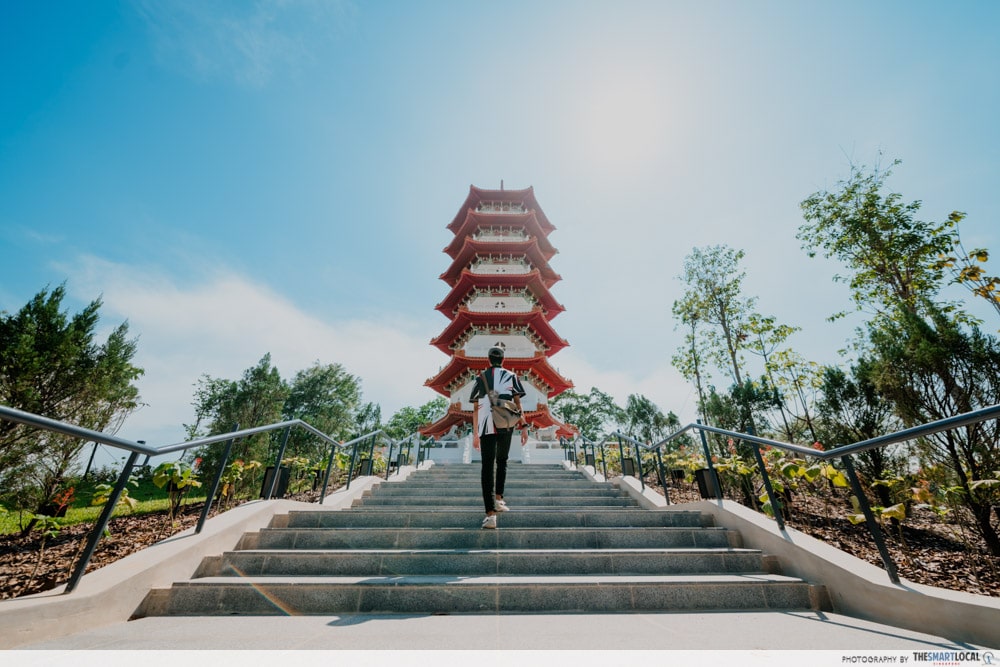
The Cloud Pagoda is situated at the top of a small hillock. At 7 stories tall, the structure is hard to miss. It was inspired by the Linggu Temple Pagoda in China. In our opinion, this is by far the most IG-worthy attraction in the gardens.
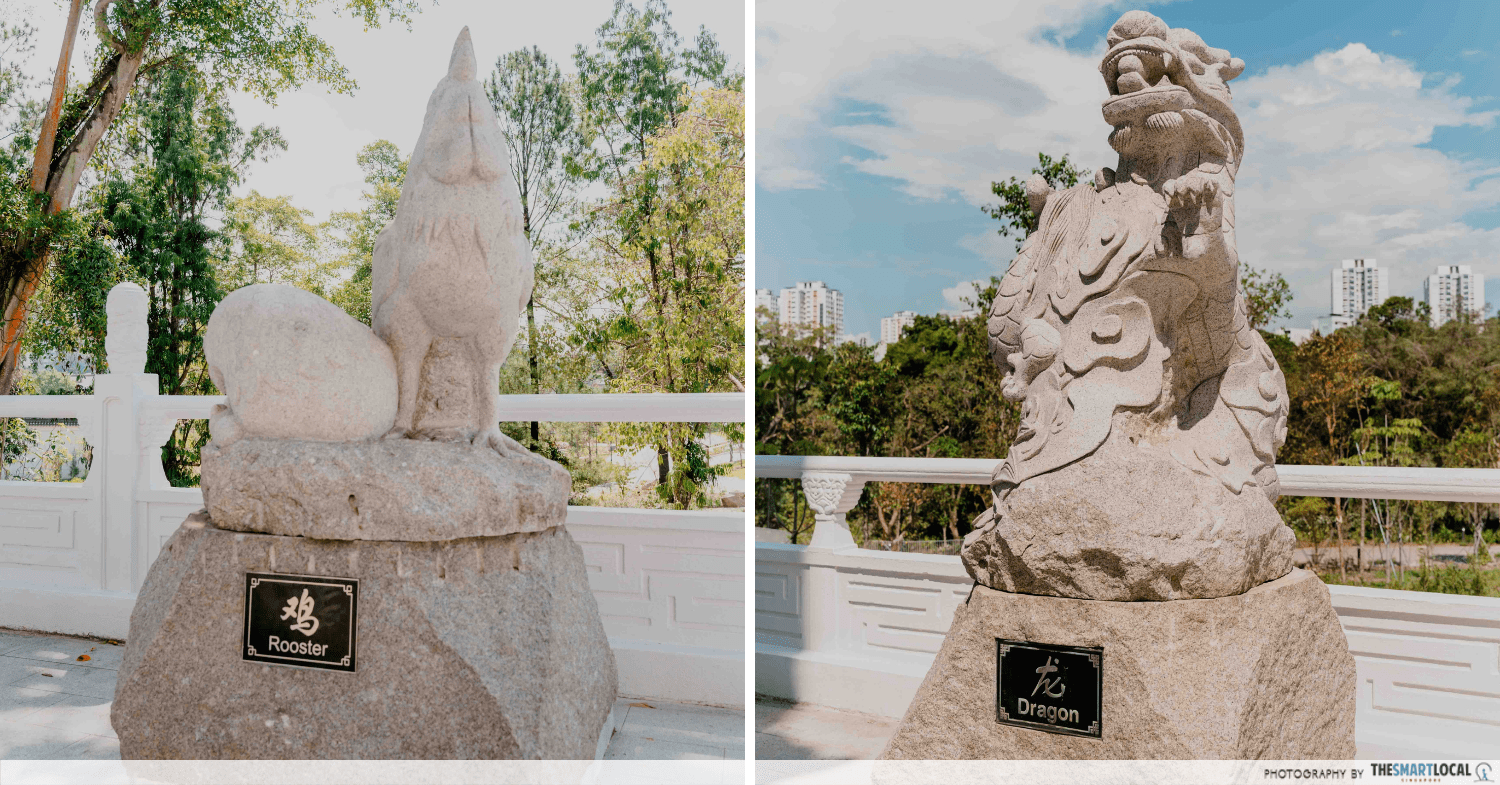
As you circle around the Cloud Pagoda, you will notice many different statues of the different Zodiac symbols strewn about. Try spotting the one that matches your birth year. Unfortunately, during our visit, the entrance to the stairwell of the pagoda was locked, as there’s still some maintenance work going on, so we couldn’t go up.
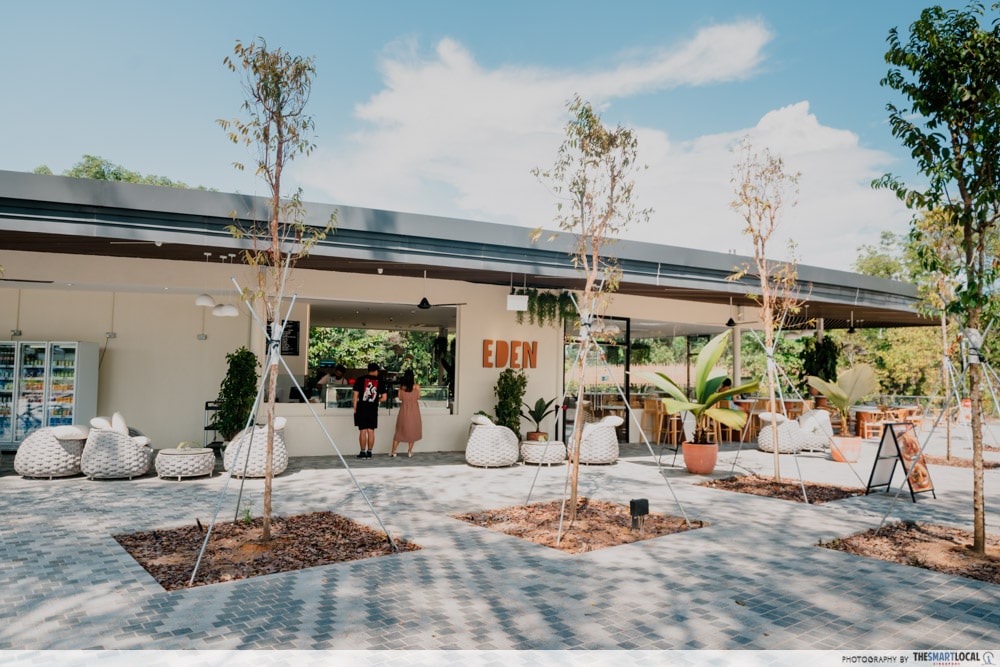
Located just a stone’s throw away from the Cloud Pagoda is the Pagoda Plaza, which houses a reception counter should you need help with anything like directions to certain attractions.
If you need to fuel up before walking around, check out EDEN CAFE @ Chinese Garden where the menu features Singaporean classics with a twist, but more on that below.
Bonsai Garden
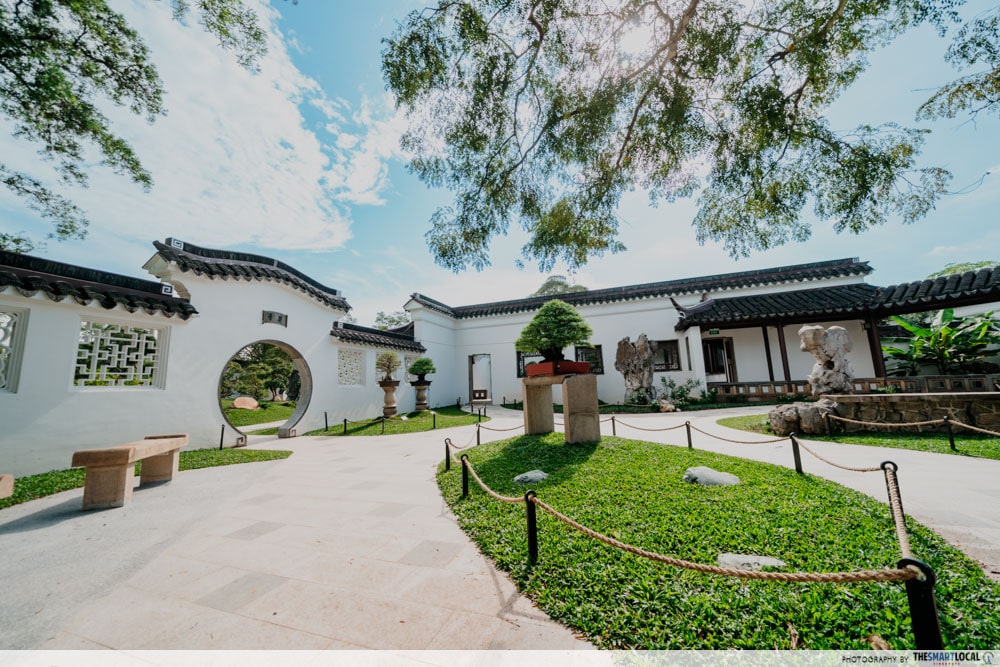
The Bonsai Garden will make you feel as if you have stepped back into olden-day China homes. It was designed with Suzhou-style architecture, which emphasises the balance between nature and art. We’ll leave you to be the judge of that.
In line with the theme, there are a number of Bonsai trees scattered about the garden. There is even an air-conditioned Bonsai Gallery housed within one of the corridors, where you can learn about its history in comfort.
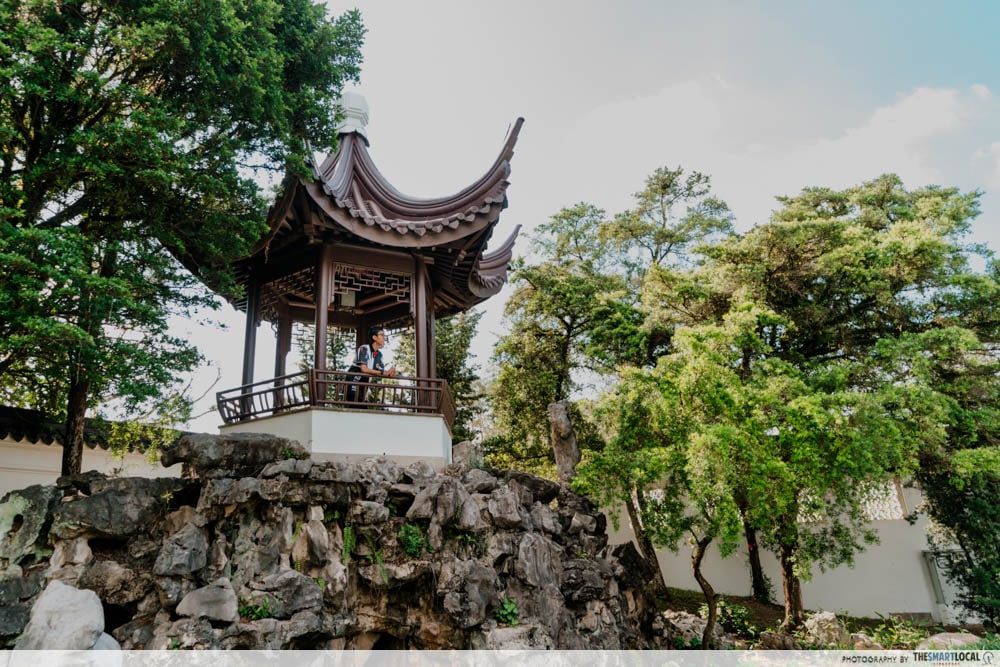
Just a short distance later, you will run into the Bonsai Pavilion which offers a nice vantage point of the entire garden. Just like with the Twin Pagoda, be careful of the rocky steps when climbing up and down, as this one has no handrails.
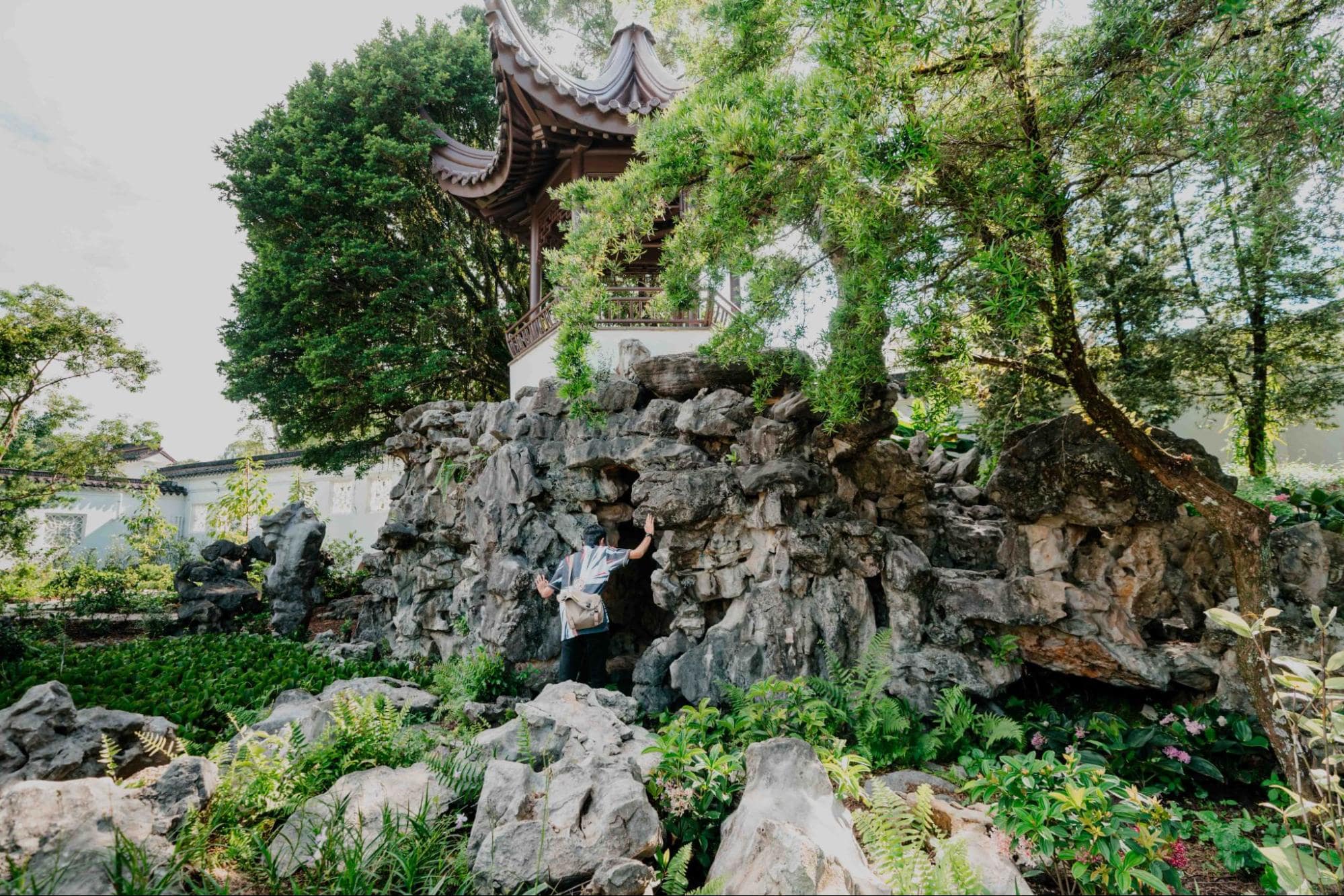 Image credit: Eldora Chong
Image credit: Eldora Chong
Those who are okay with moving in cramped spaces can also check out the newly built underground cave beneath the pavilion. Move about as stealthily as Indiana Jones did, though you’ll find no hidden treasure here, unfortunately. If you’re a tall guy like me, please mind your head as you navigate the space.
Stone Boat & Tea House Pavillion
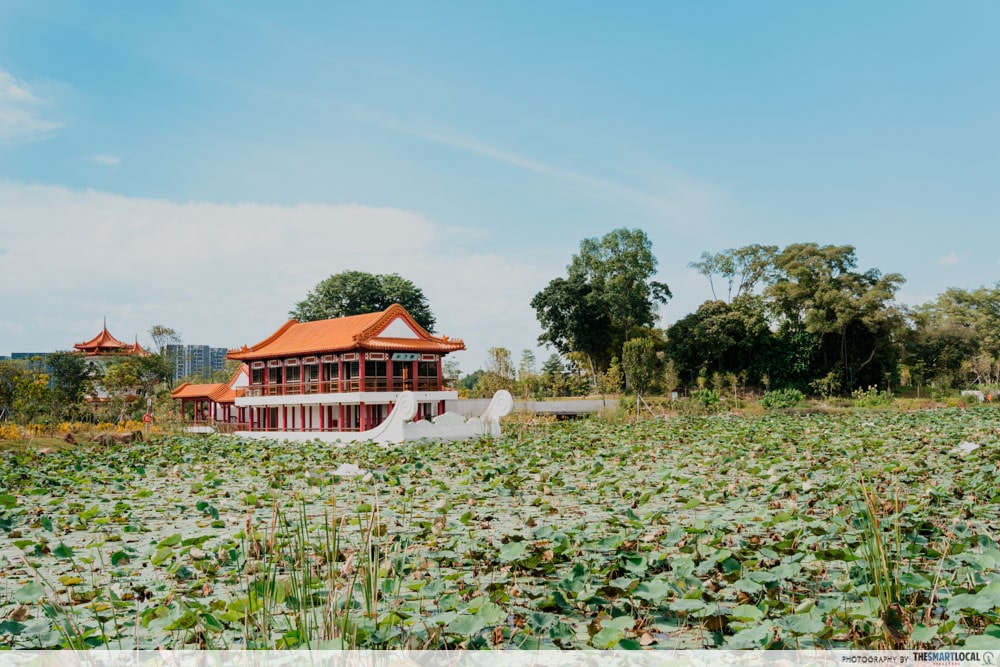
What a beautiful sight!
Should the hustle and bustle of the city be getting you down, go for a calming walk to the Stone Boat, set atop the edge of a lily pond, where you can admire the scenery of the lake. Try spotting turtles or lizards frolicking about amidst the scenic landscape of the lily pads.
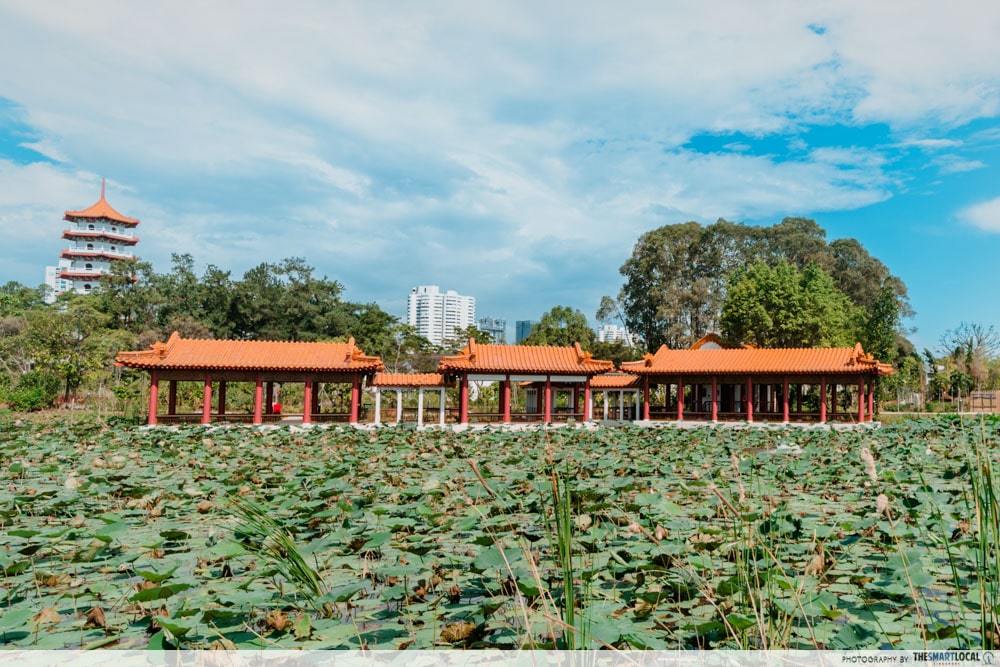
Once you’ve got your postcard-perfect shot, make the very short voyage to the Tea House Pavilion, which looks like it’s floating on water.
Twin Pagoda
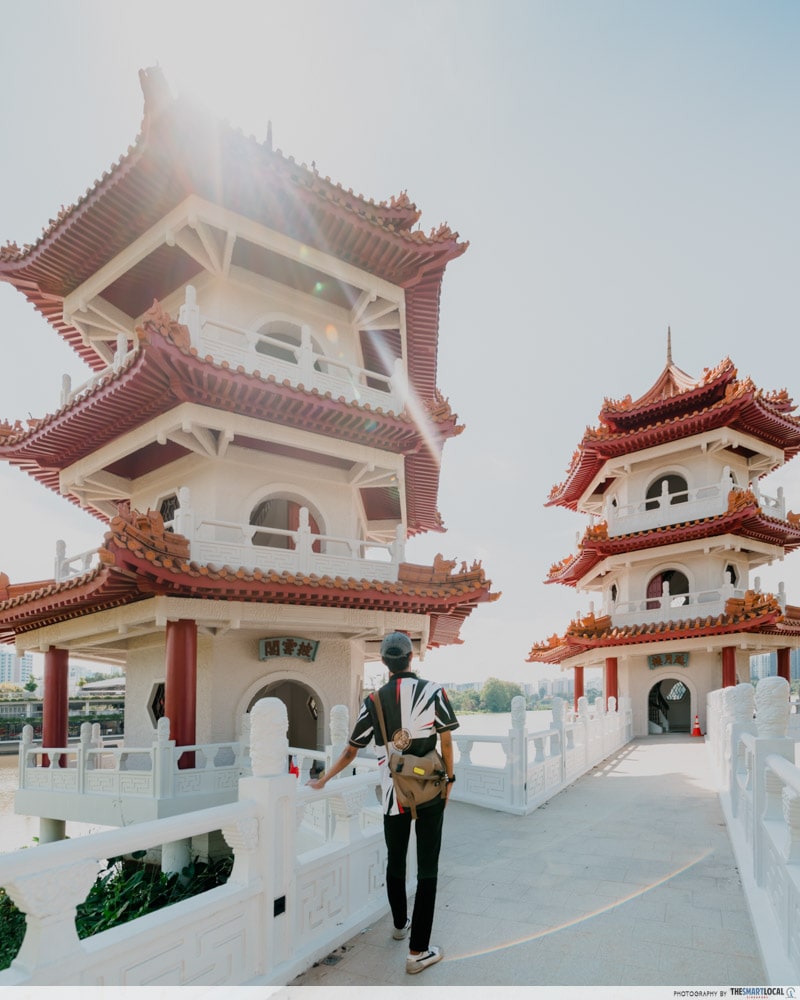
Head further down towards the Twin Pagoda – another not-to-be-missed photo spot. Inspired by the Spring Autumn Pagoda in Southern China, each of the Twin Pagoda is 3 storeys high, and this one can be accessed by the general public. Just be careful when climbing the steps, though, as they are curved and quite narrow.
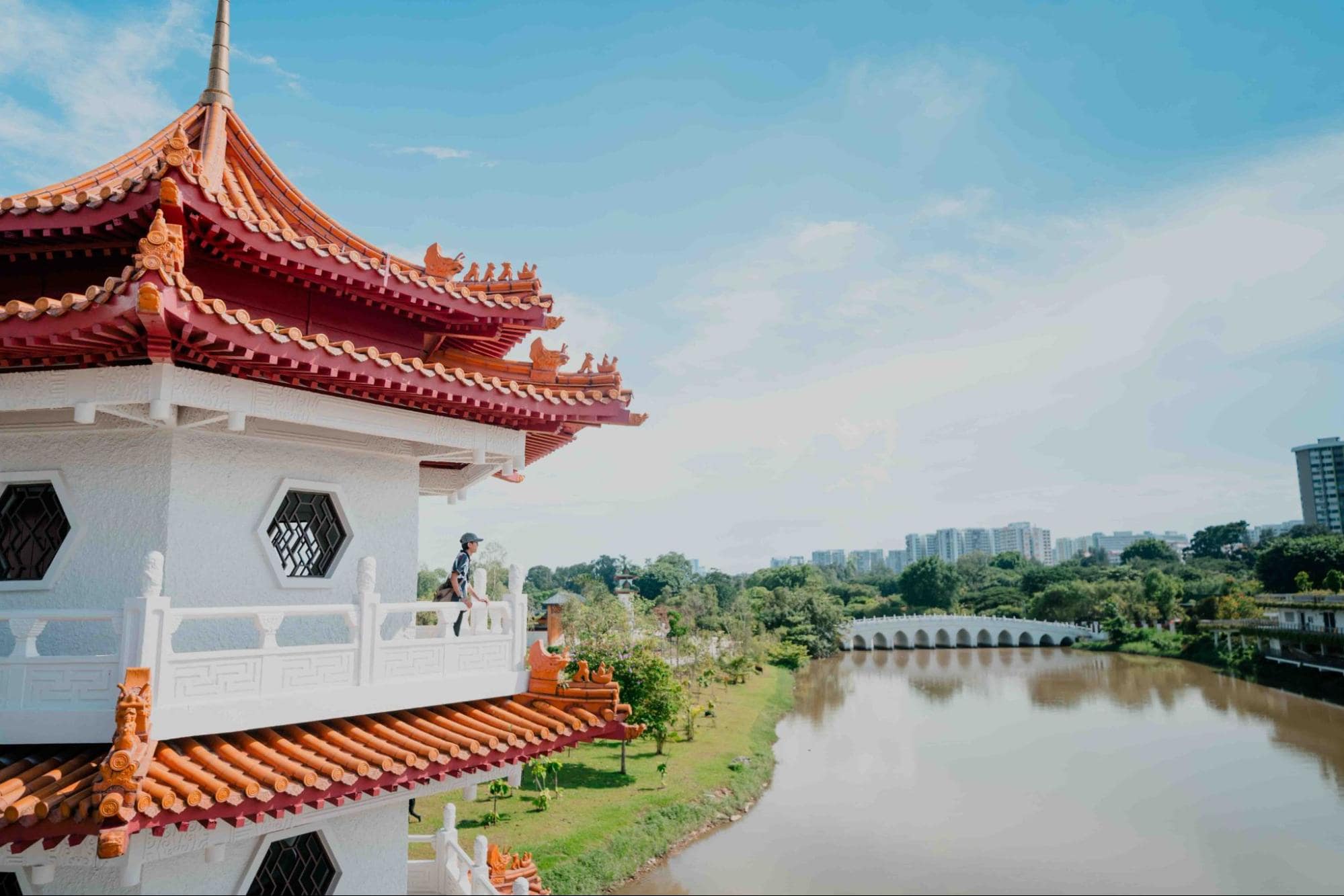 Image credit: Eldora Chong
Image credit: Eldora Chong
Once you climb the spiral stairwell, you’ll have a beautiful view of the surroundings, where you can even see the passing cars and MRT in the distance. If you face the other way, you can also have a rough overview of the Chinese Gardens in Singapore.
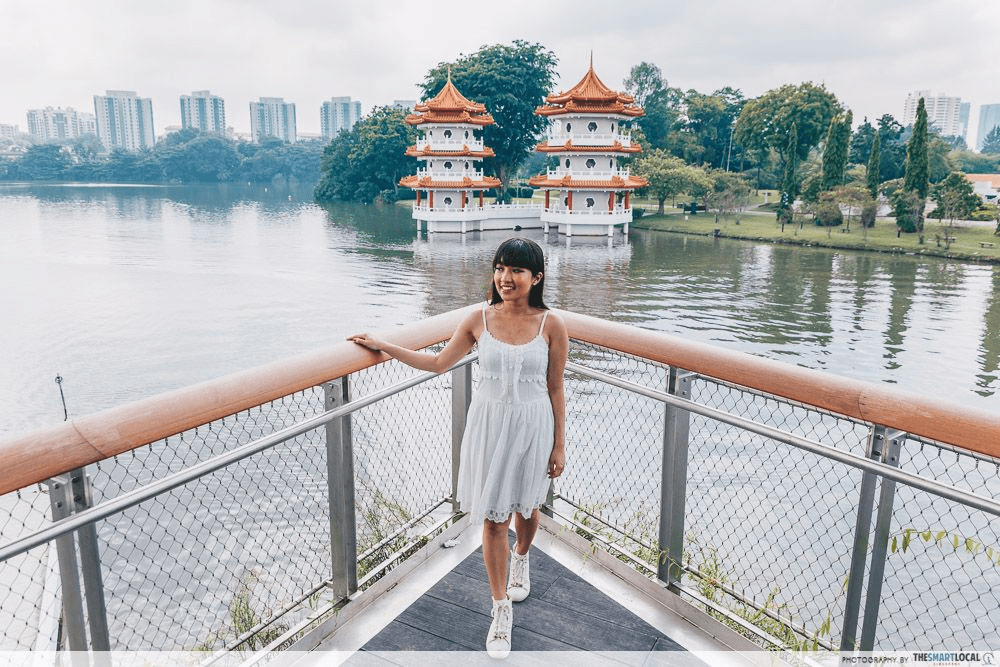
But if you want to have the Twin Pagoda as the backdrop instead, cross over to Passion WaVe @ Jurong Lake Gardens, where you can pose at the balcony corner.
Edible Garden
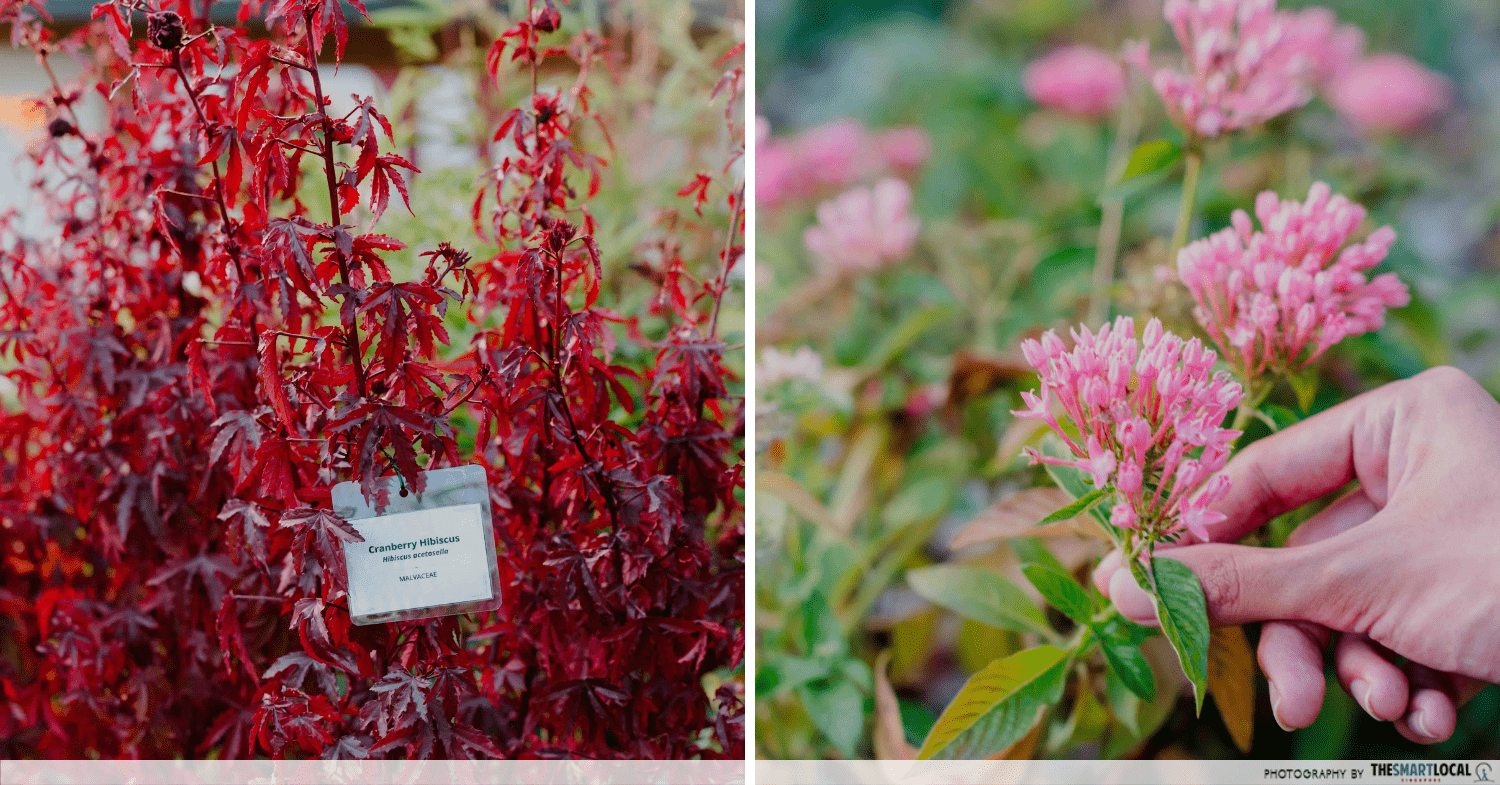
Nowadays, there’s a lot of emphasis on growing your own food, whether it’s vegetables at home or through community gardens. It can be a bit intimidating to start, which is why you can see how it all works at the Edible Garden. This comprises several mini gardens, each one growing different kinds of edible plants, flowers, or herbs.
Situated inside the Edible Garden is also a plant factory, which uses hydroponics similar to the one at Choa Chu Kang Library to grow plants like basil, rosemary, and thyme.
Grand Arch & White Rainbow Bridge
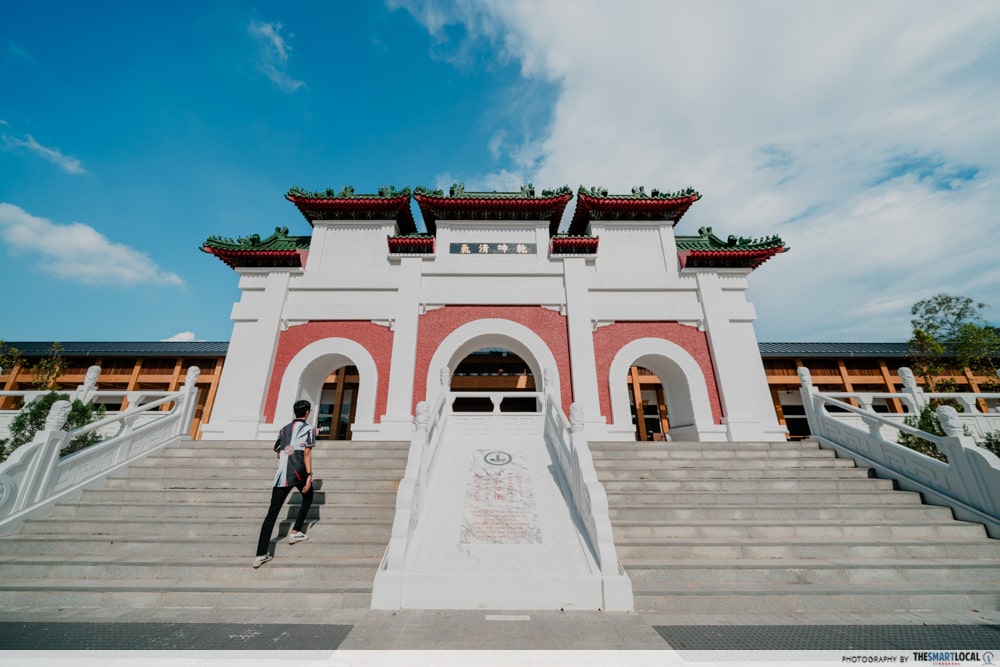
You may already be familiar with the Grand Arch, though it has been made even better now with sweeping views of the garden, thanks to the demolition of the surrounding walls. As you climb the stairs, you will spot intricate motifs depicting Chinese mythology.
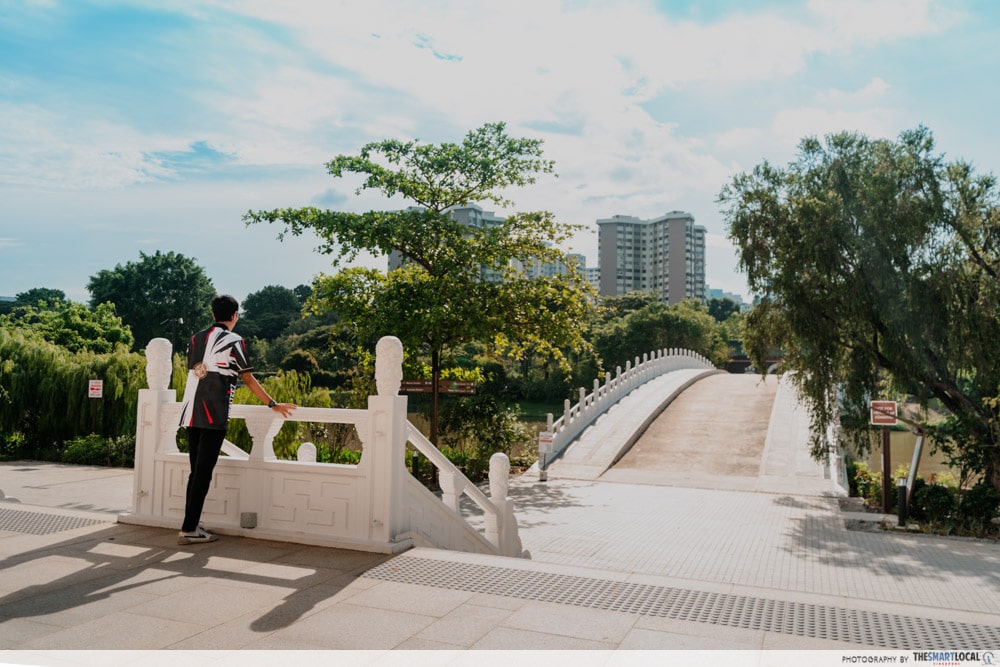
The view from the top of the stairwell makes it a good space to catch the sunrise or sunset, and even catch sight of the neighbouring HDB flats on the horizon. It also marks the west entrance of the garden.
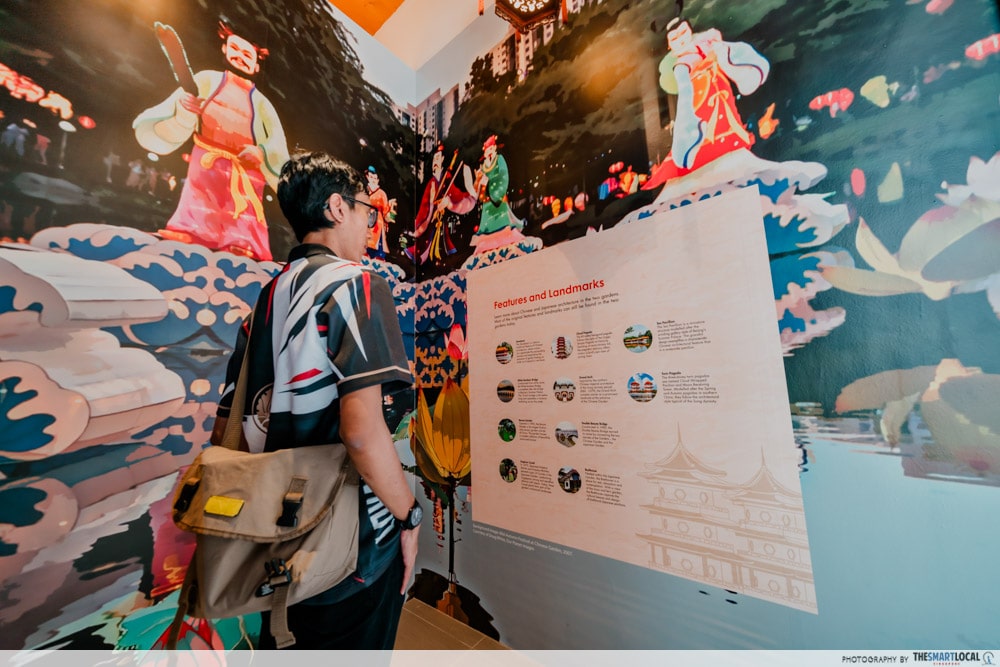
Here, you learn more about the attractions beyond just their IG-worthy looks.
Catch another much-needed break from the heat at the new Jurong Lake Gardens Gallery, which details the evolution of the garden from the 1970s up until today. The use of archived pictures, memorabilia, and interactive displays makes it akin to visiting a museum.
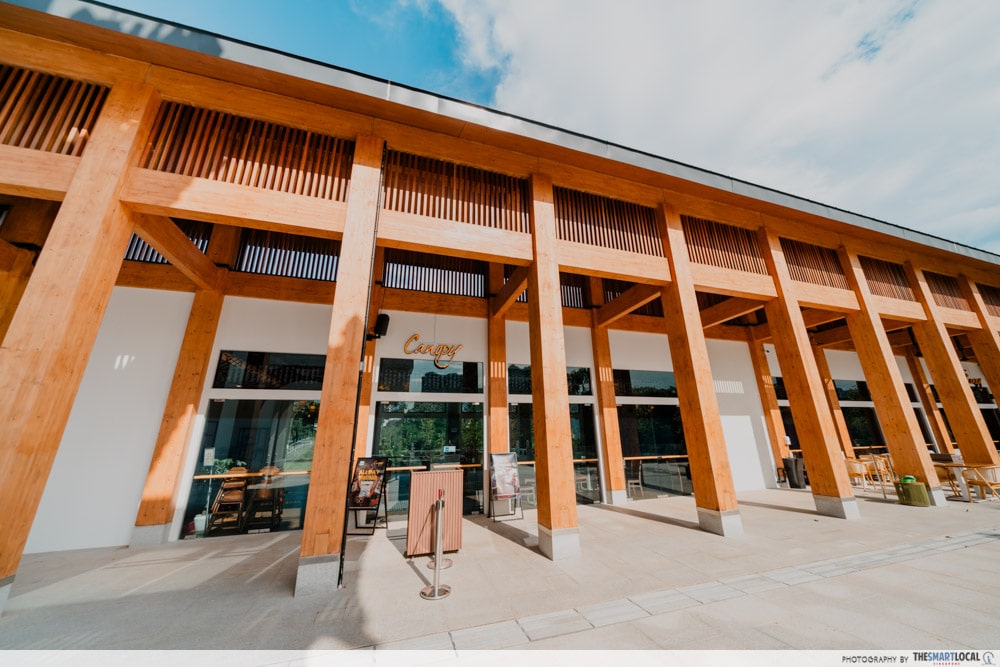
If the walk has made you peckish, swing by Canopy, a pet-friendly cafe right beside the gallery with an open view of the greenery outside, making for a hybrid el fresco makan pit stop.
Bamboo Grove & Waterfall
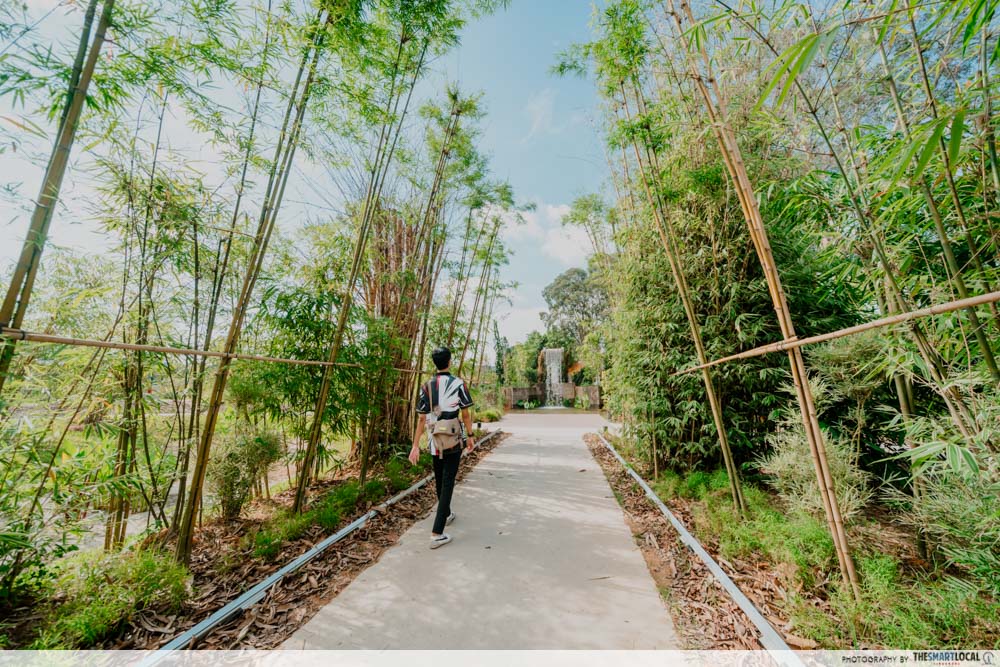
Cross the White Rainbow Bridge to cool off with a nice stroll at the new Bamboo Grove and Waterfall section, where you can feel the shiok wind generated from the waterfall get trapped by the bamboo to create a “cooling corridor” effect.
– Attractions to check out at the Japanese Garden in Singapore –
To get to the Japanese Garden from within the Chinese Garden, simply walk across the Moonrise Bridge.
Sunken Garden
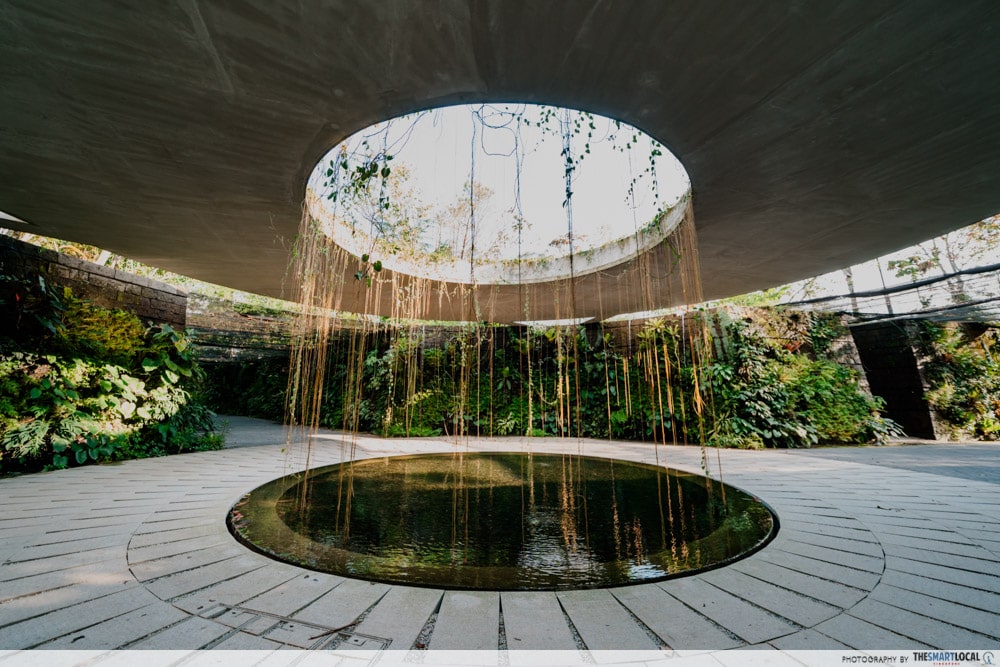
The Sunken Garden is probably what a lot of you have been seeing on socials as the new “it spot” at the Japanese Garden in Singapore. It is a valley-like garden that looks like it came straight out of Westworld.
As you walk around the green-walled paths that are made from more than 200 different types of plants, you’ll see the sun shimmering down the cenote, inspired by limestone caves.
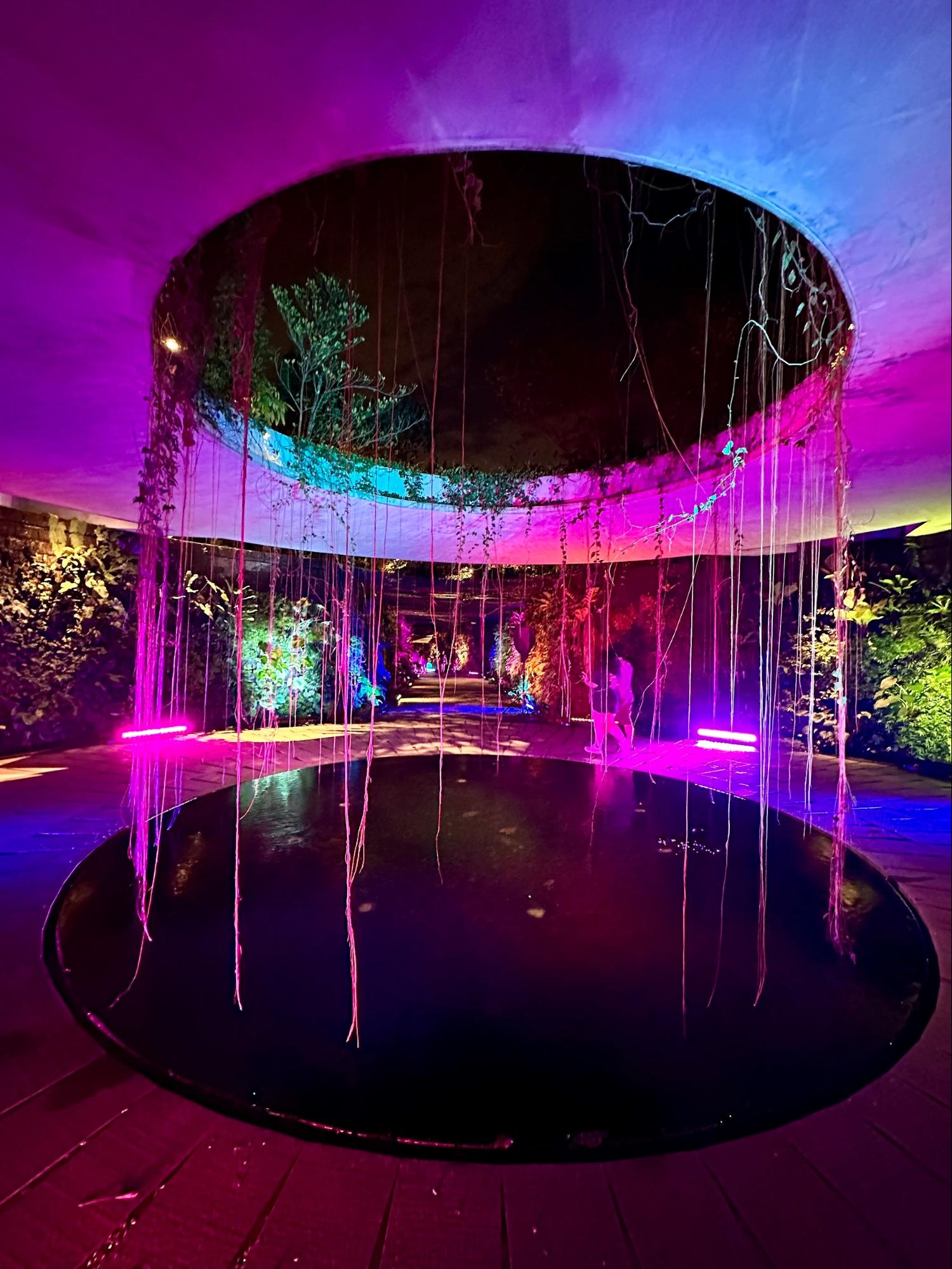 Image credit: Aditi Kashyap
Image credit: Aditi Kashyap
At night, there will be mist sprayed about and light shows to enhance your viewing experience and take even prettier snaps.
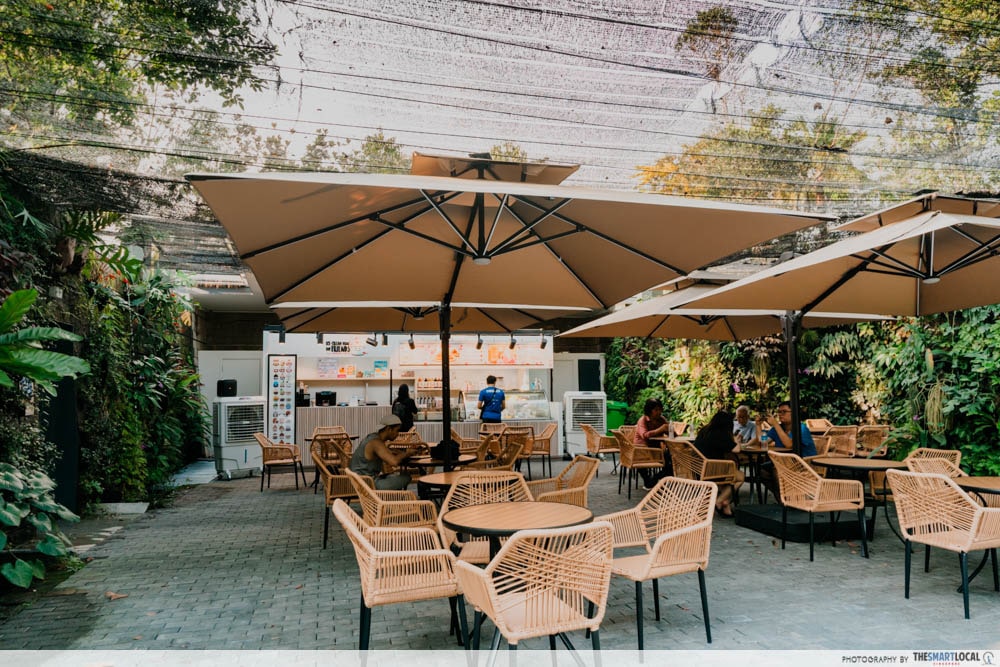
End off your trip with a refreshing drink under the shade at Ice Cream Man and Friends – The Garden Cafe. The cosy spot serves scoops of ice cream starting from $4.50/cup.
Water Lily Garden & Pavilion
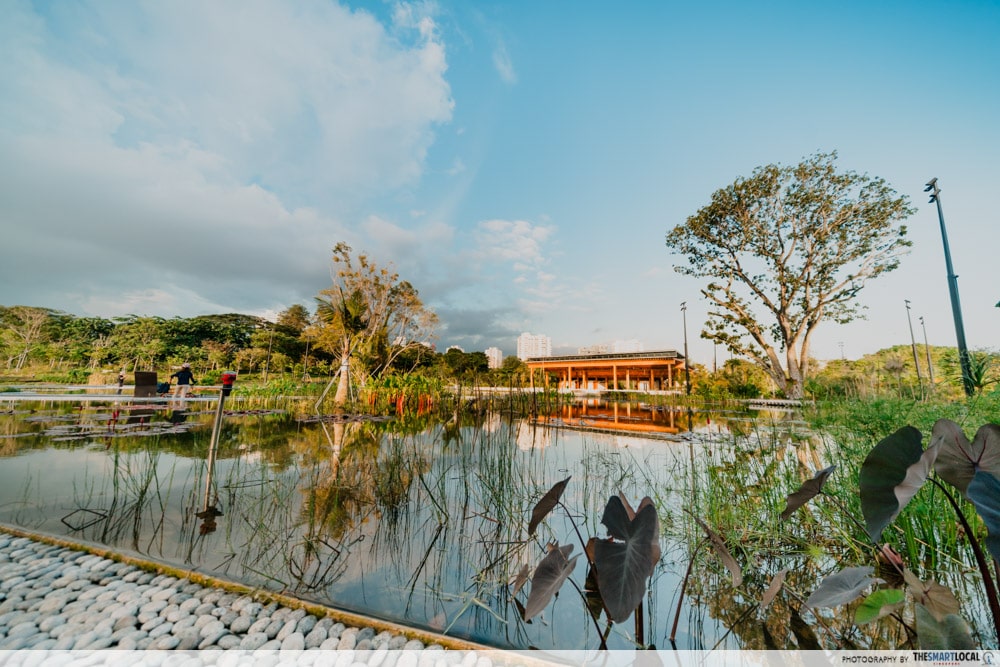
You can see the Water Lily Pavilion in the distance.
If you are entering via the Japanese Garden Bridge, the Water Lily Pavilion is one of the first main attractions you’ll see ahead of you. There are more than 150 water lily species and it is the largest of its kind in Singapore. As you walk around, you can admire the wide pond reflecting the blue sky, with the water lilies further up ahead.
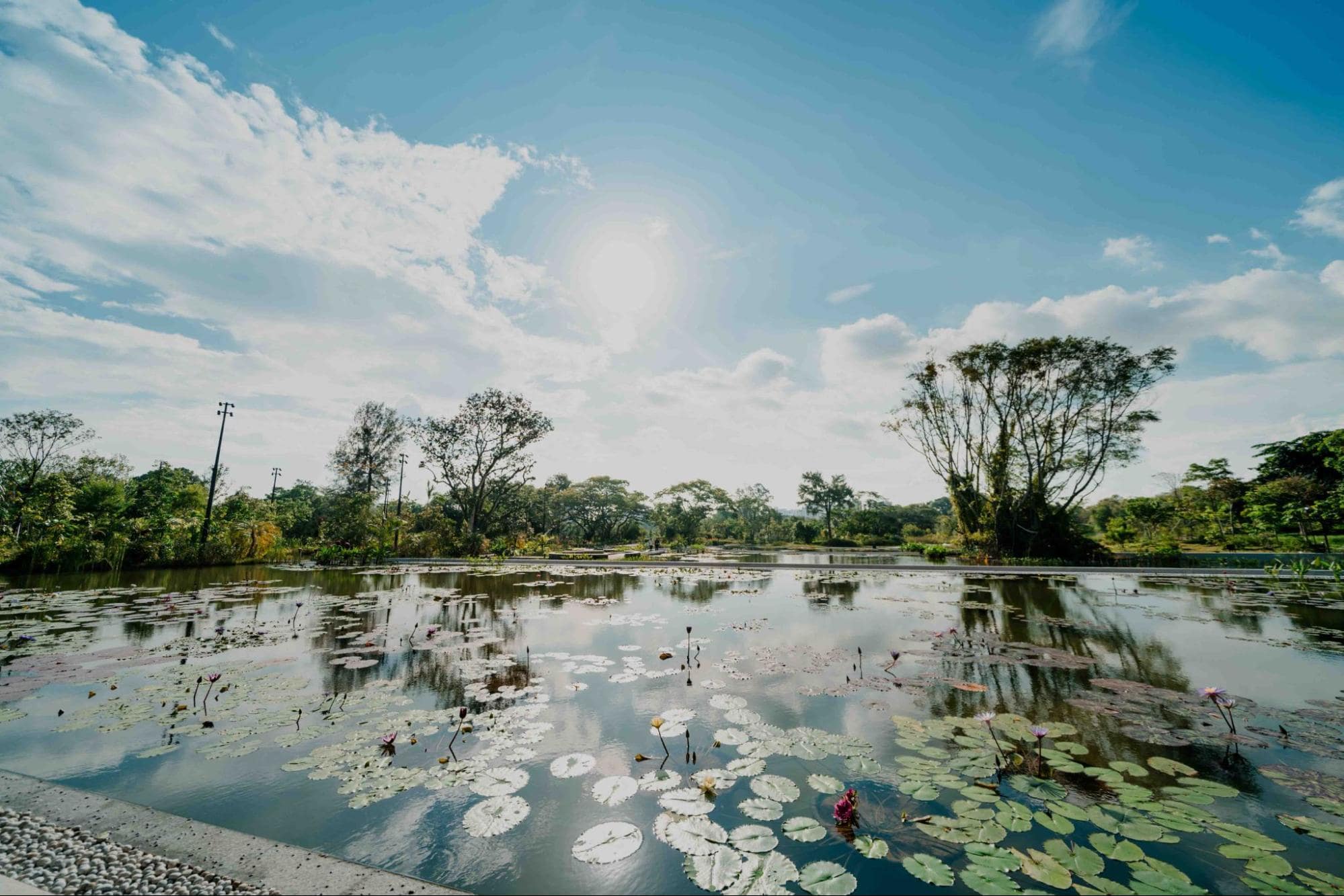 Image credit: Eldora Chong
Image credit: Eldora Chong
As you reach the Water Lily Garden, you can check out the water lilies up close and look out for fish swimming around or butterflies fluttering about.
Breathing Gallery
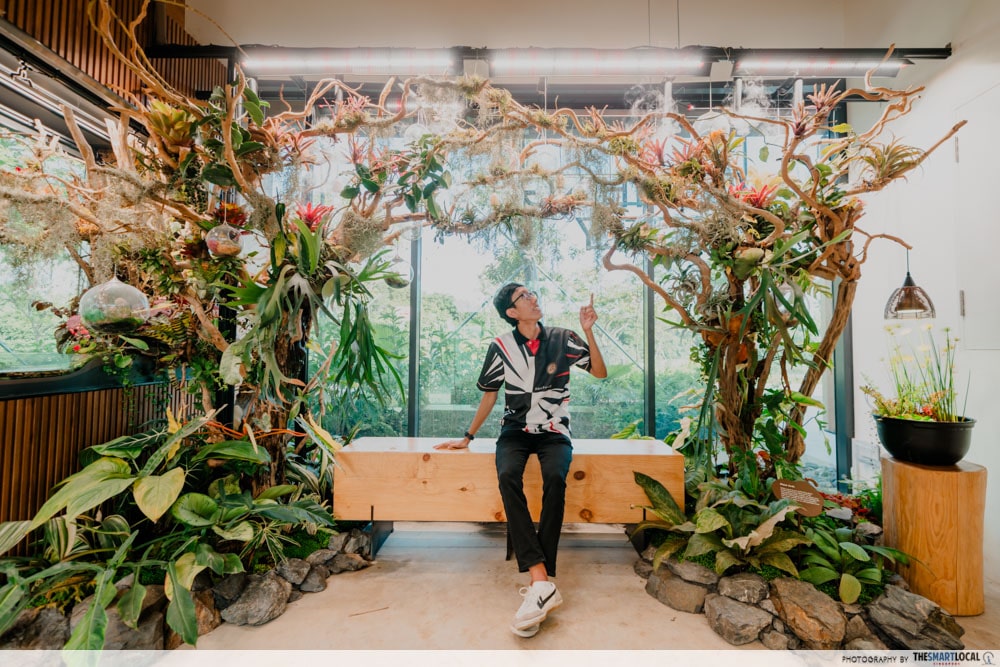
Fans of aquariums can visit the Breathing Gallery at Japanese Gardens in Singapore, an air-conditioned indoor area housing terrariums and even paludariums – a hybrid of the two. The plants and animals here usually don’t thrive in the tropics, except in this case, where the conditions are ideal.
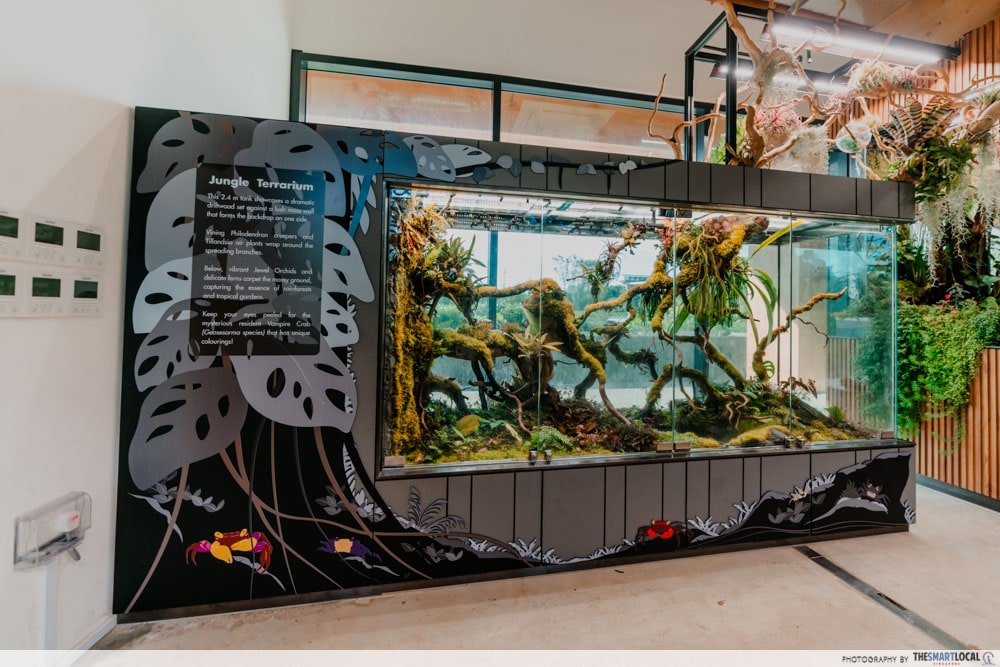
Finding the vampire crab is harder than playing the game “Where’s Waldo.”
Once you step in, you will be greeted by a 2.4m-long terrarium that houses unique terrestrials like vampire crabs, fish, and plants such as jewel orchids. Try spotting the crabs if you can, though they’re known to blend in with the bushes and we couldn’t find them even after searching for 10 minutes.
A few metres away from that tank is the aquatic zone, which has a collection of displays showcasing different marine plants and fish species.
– Where to eat at the Jurong Lake Gardens –
1. Eden Cafe
Halal cafe serving local dishes with a twist
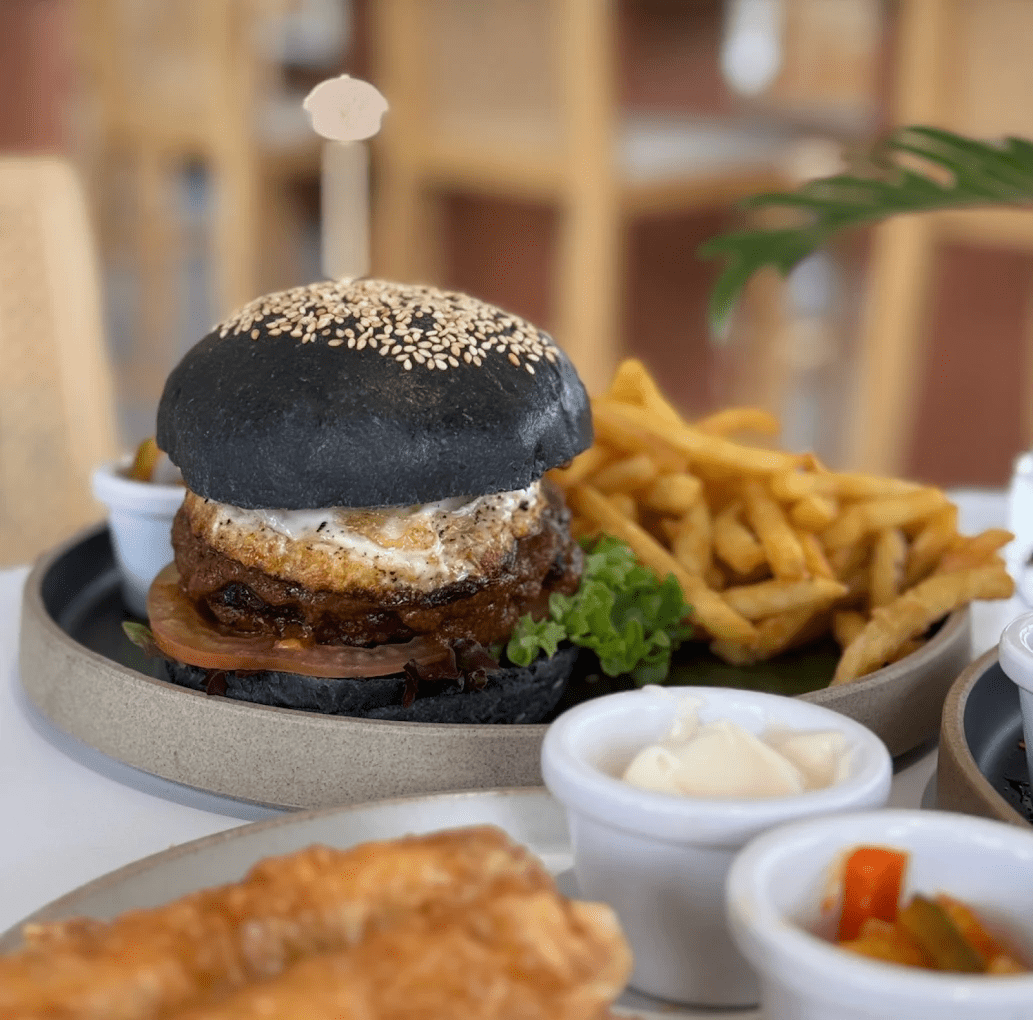 Image credit: Dtfoodaffair via Google Maps
Image credit: Dtfoodaffair via Google Maps
If you’re coming from the Chinese Garden, you could check out Eden Cafe. It’s a halal cafe that is located right next to Cloud Pagoda. So, as you seek shelter from the sun and fill your belly, you can still enjoy the lush greenery of the gardens.
They serve a wide range of local classics along with some fusion dishes. Some must-tries include the Peranakan Laksa ($8.90) and Eden Nasi Lemak ($8.90). An interesting offering is the Rendang Burger ($20) where each beef patty is richly marinated with rendang flavours and packed between 2 buns.
2. Canopy Jurong Lake Gardens
Pet-friendly alfresco diner
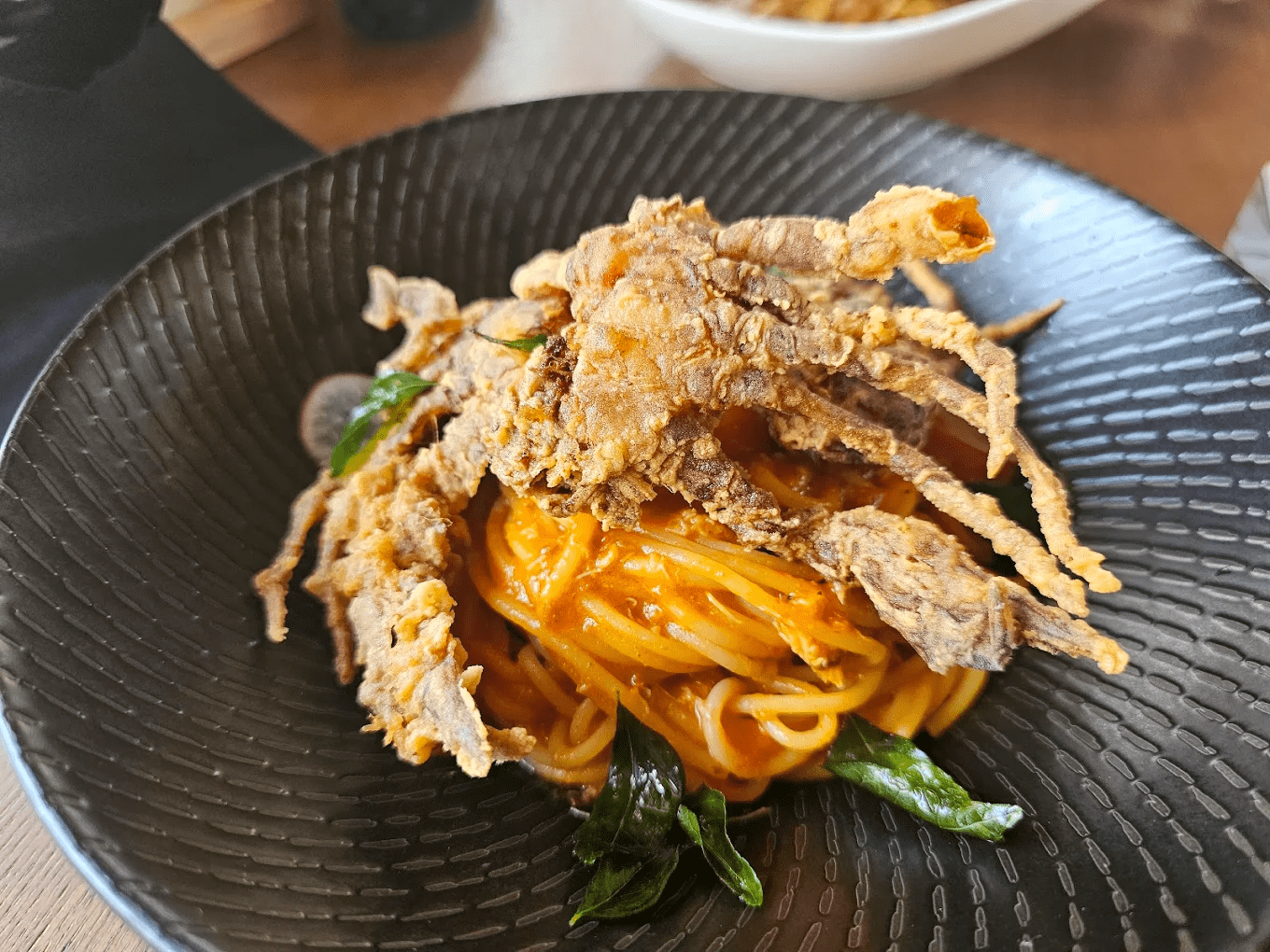 Image credit: Fel Ong via Google Maps
Image credit: Fel Ong via Google Maps
Canopy Jurong Lake Gardens is a nice spot for paw-rents and their furbabies to rest and enjoy a nice meal. They have an outdoor alfresco dining area that’ll let you keep your pets by your side as you eat.
On the food side, they have a variety of Western and fusion dishes. Some great selections on their menu are the Homemade Chilli Crab Pasta ($26), Homemade Sambal Sea Bass ($27), and Truffle Mushroom Pizza ($28).
3. Kin Yang Thai Food
A “hidden gem” Thai stall with affordable dishes
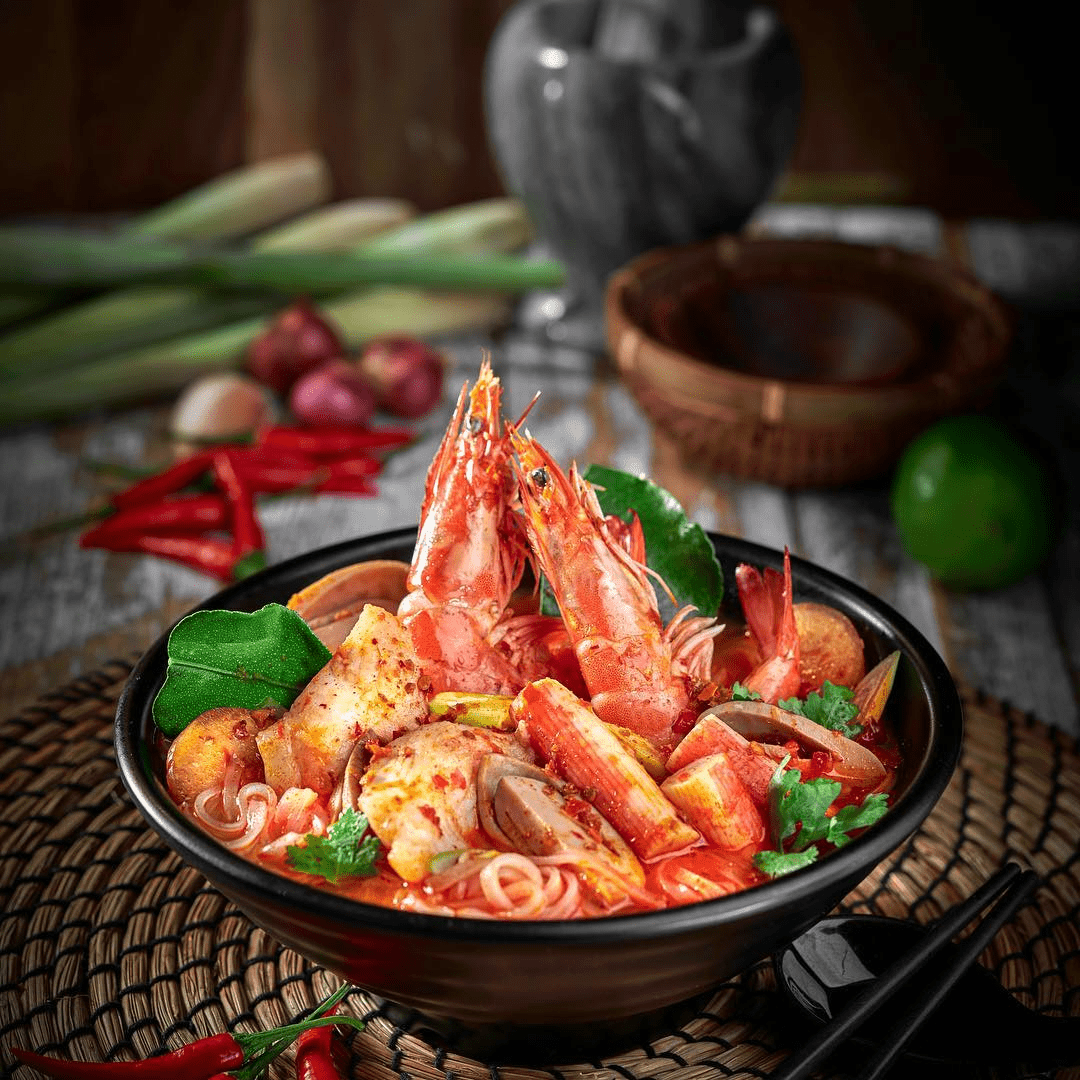 Image credit: KIN YANG Thai Food via Facebook
Image credit: KIN YANG Thai Food via Facebook
Hidden within Block 349 along Jurong East Avenue is this cosy Thai restaurant, Kin Yang Thai Food. After a tiring day out, treat yourself to some soothing Thai cuisine, like Green Curry Chicken ($6.50) and Mango Sticky Rice ($6.50). Of course, no meal would be complete without the classic Thai Tom Yum ($7.90), with its warm broth and fresh seafood.
4. Devil’s Kitchen
Air-conditioned Western restaurant with pasta & grilled dishes
 Image adapted from: Devil’s Kitchen via Facebook
Image adapted from: Devil’s Kitchen via Facebook
When you’ve spent the whole day out in the sun, you must be seeking some reprieve from the heat. Just duck into Devil’s Kitchen, a Western bar and grill tucked just outside the gardens. Sit back, grab a beer, and enjoy the variety of meal options they have in store.
You can never go wrong with a classic XXL Chicken Cutlet With Creamy Mushroom ($13), which has a spicy option if you’re looking for something with a little more kick. If you’re thinking of something a little out of the box, try The Fusion Quesadillas ($9.50) – a cheesy quesadilla served in a crunchy tortilla wrap with a side of homemade guacamole.
5. Nam Kee Chicken Rice Restaurant
Retro-looking chicken rice restaurant with signature chilli sauce
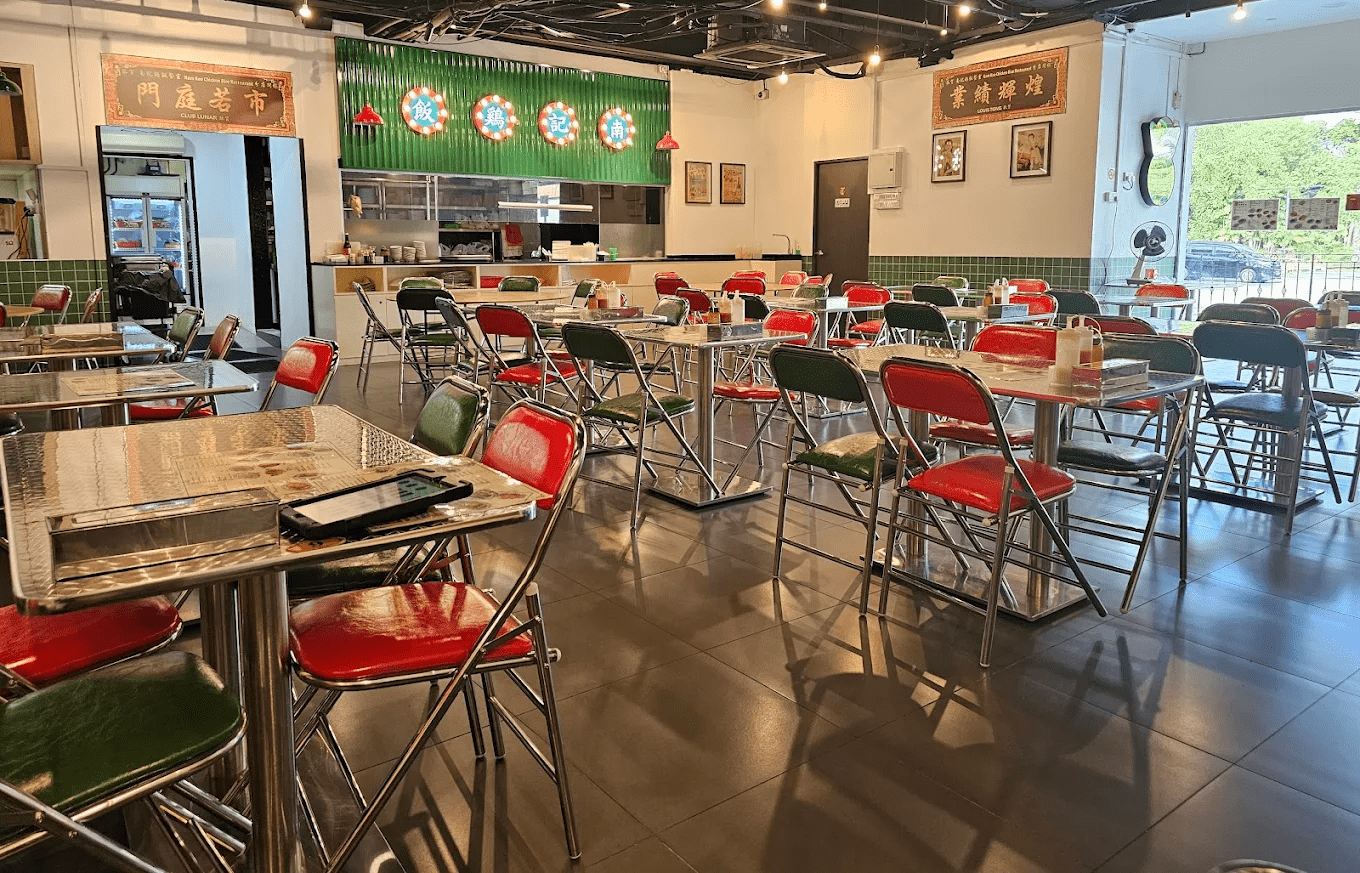 Image credit: Jeremy Tan via Google Maps
Image credit: Jeremy Tan via Google Maps
You might be considering visiting one of the nearby hawker centres to grab a plate of chicken rice. But you’re already thinking twice after remembering the hot benches and sweltering heat from the open kitchens. We found the perfect alternative: Nam Kee Chicken Restaurant.
Don’t sweat – literally. This vibey retro restaurant is air-conditioned and serves up the traditional chicken rice that you know and love.
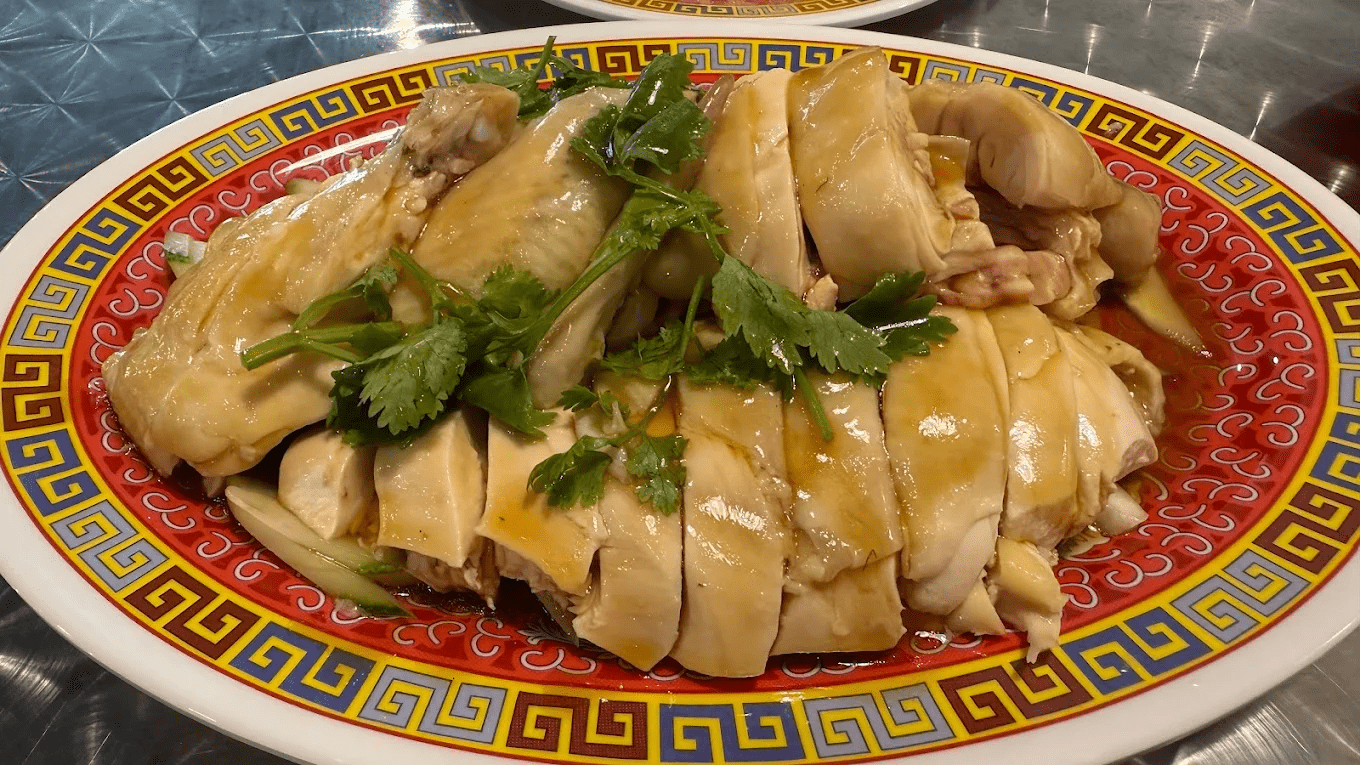 Image credit: Pauline Wee via Google Maps
Image credit: Pauline Wee via Google Maps
Indulge in a warm plate of Hainanese Steamed Chicken (Full $32, Half $16) and fill your belly to your heart’s content.
6. Chuan Shi Dai 川食代
Steamboat restaurant with Sichuan cuisine
 Image credit: CuteyPies gmail via Google Maps
Image credit: CuteyPies gmail via Google Maps
Chuan Shi Dai 川食代 serves up classic Sichuan eats. Try out their Spicy Hot Pot ($19.80) and top it off with some seafood options like Chongqing Grilled Fish ($28.80).
According to a Google Review, they believe that the restaurant doesn’t add MSG to their dishes due to their sibling having a sensitivity to it. But it hasn’t been verified by the store owners. Just keep it in mind when you’re thinking of ordering at this place.
7. Kotobuki
Homely Japanese restaurant with daily promos
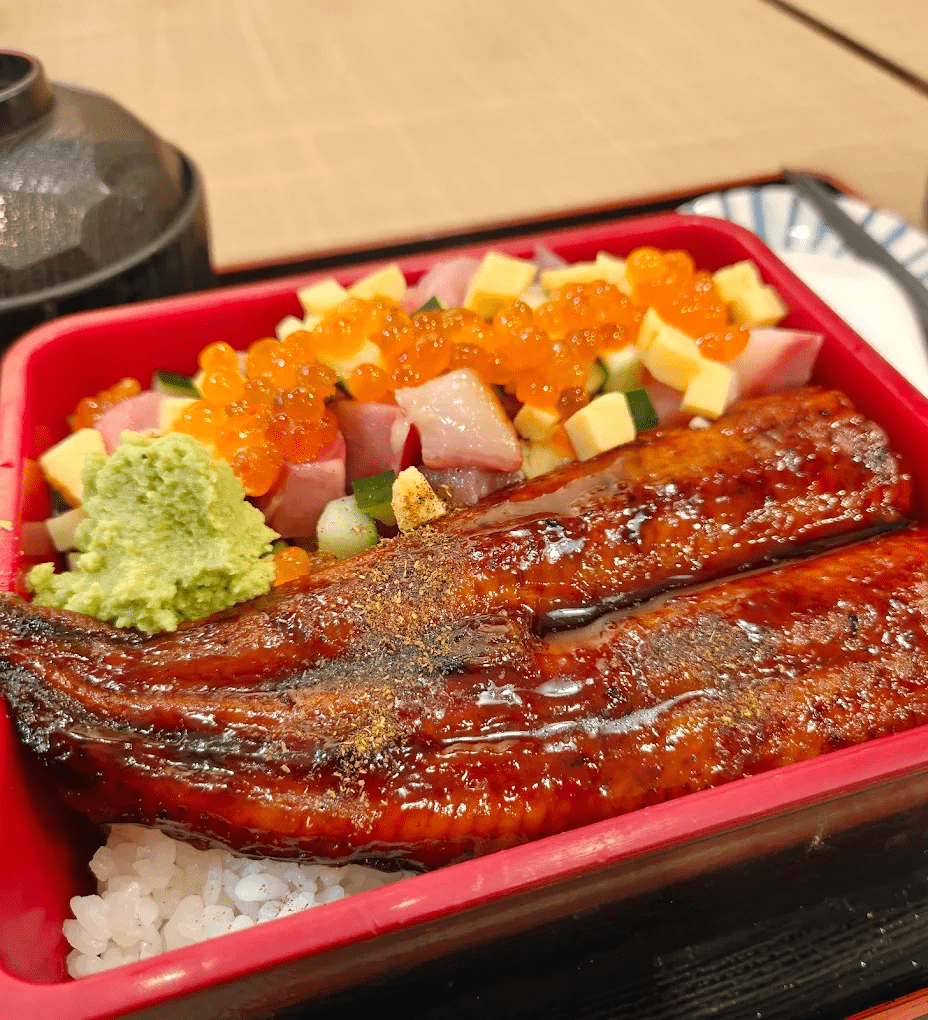 Image credit: Daniel Cai Wenjie via Google Maps
Image credit: Daniel Cai Wenjie via Google Maps
There’s also a cosy Japanese eatery just a walking distance away from the gardens. At Kotobuki, have your pick of a variety of sushi rolls and sashimi set meals. They’re also quite known for their chirashi – a mix of different types of salmon in one dish.
The store regularly offers Weekend Set Lunch and Weekend Special deals with discounts up to 20%. If you’re looking for some good happy hour deals, they have a wide selection of alcoholic beverages, including Junmai ($7.50) and Ichiko Shochu ($8/glass).
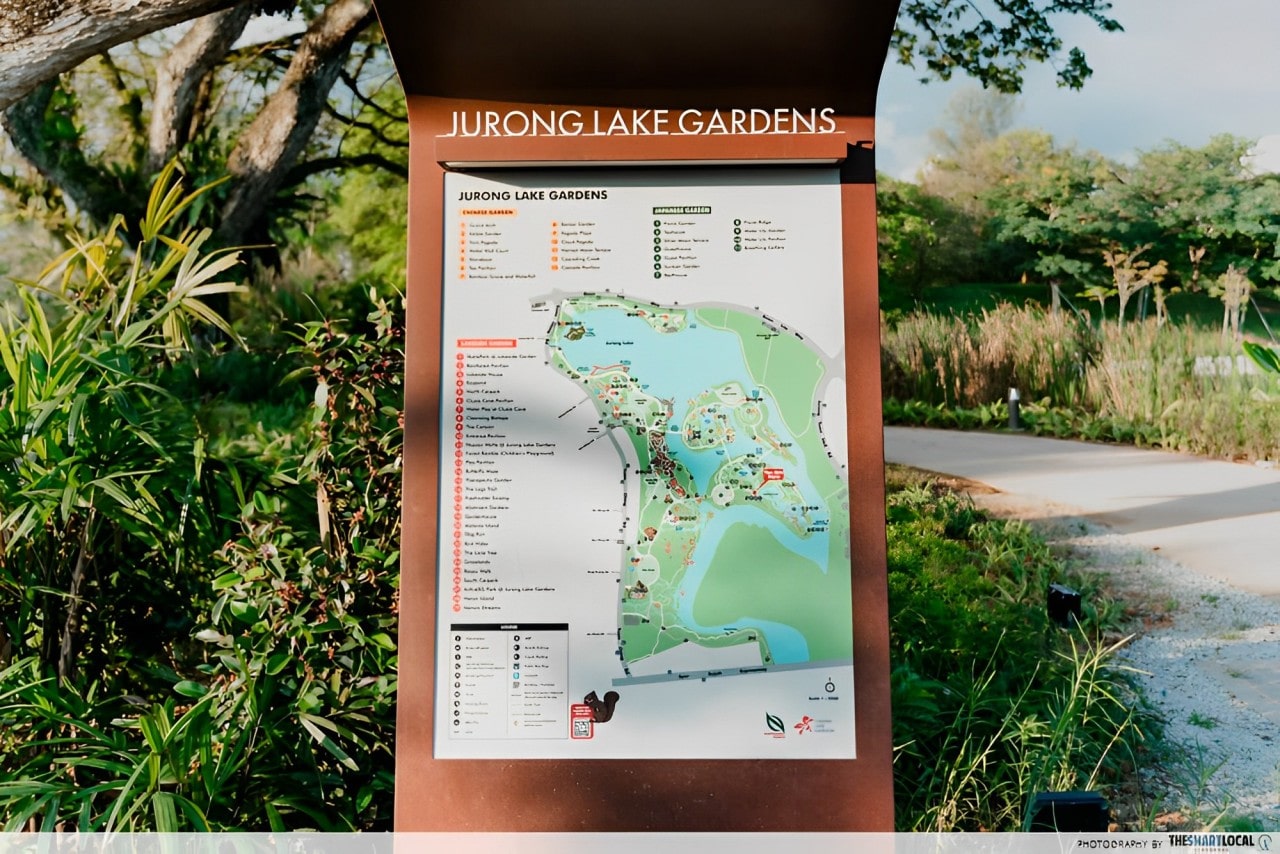
As you walk around the Jurong Lake Gardens, you’ll find a directory map scattered across the place. You can also go to their website to find the interactive map, where you can plan ahead on which attractions you wish to zone in on.
While it looks like the Chinese and Japanese Gardens in Singapore are islands of their own, all the gardens are connected via bridges so you can easily navigate the grounds. Just be prepared to walk a lot.
Visit the newly revamped Chinese & Japanese Gardens
Now that you know what attractions, features, and places to eat are available, bookmark the Chinese and Japanese Gardens for your next nature expedition.
For other cool nature spots, check out:
Photography by Eldora Chong.
Article originally published on 8th Oct 2024. Last updated by ‘Arifah Malik on 17th October 2025.
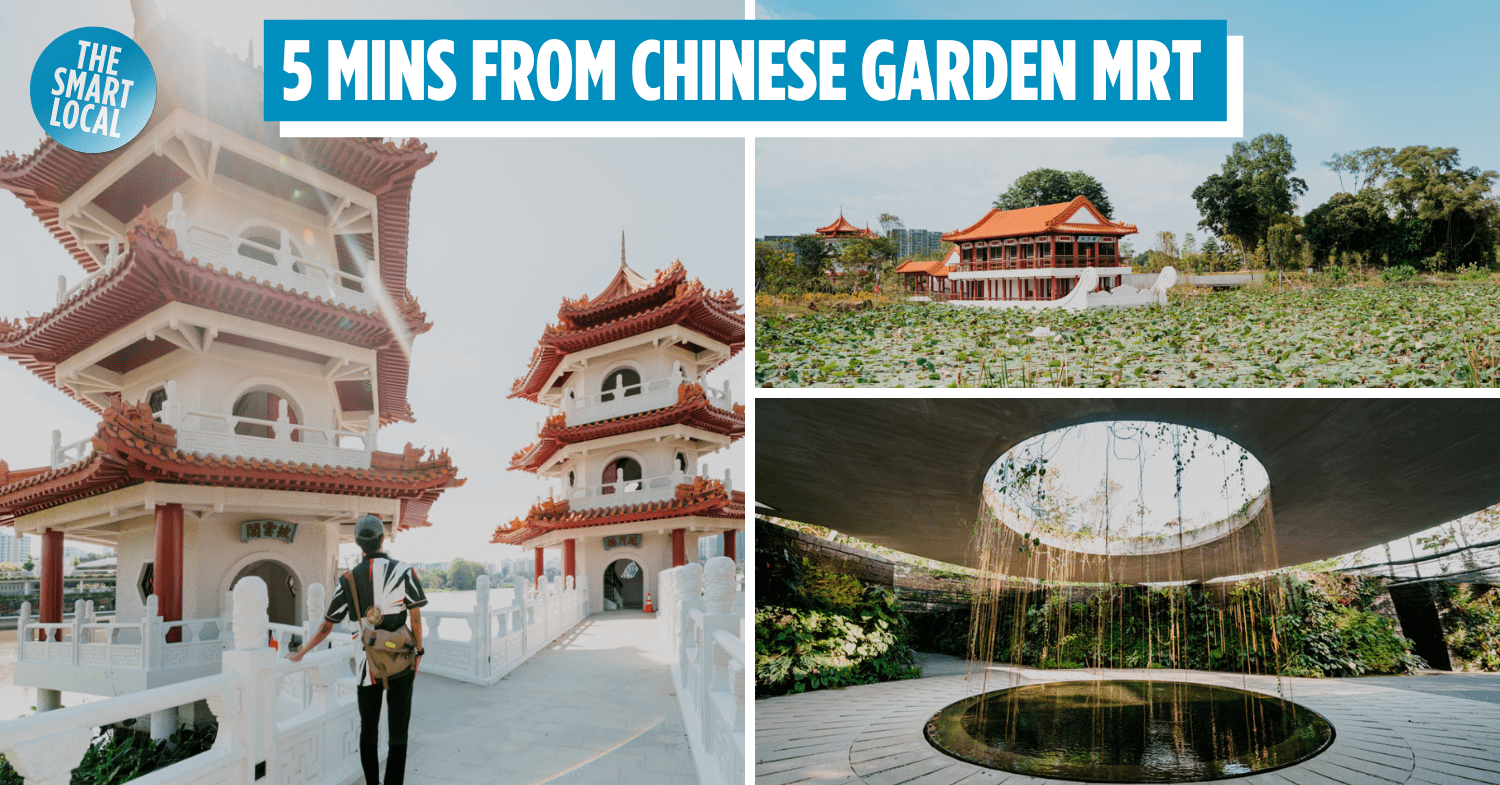
 Sign Up with TSL Connect
Sign Up with TSL Connect